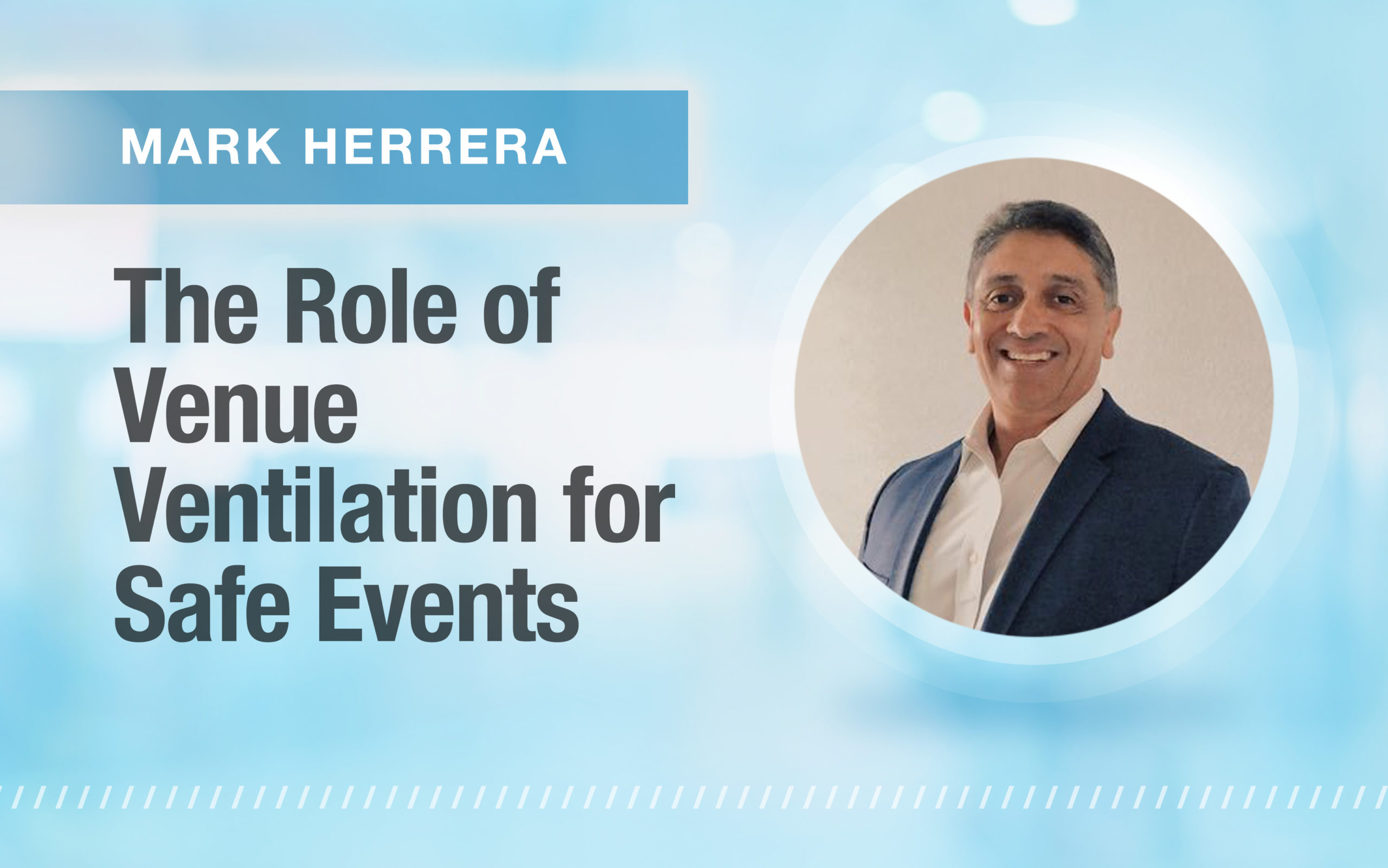Venue Ventilation: Essential Questions to Ask Before Your Event
From humidity levels to air circulation, what do you need to know to mitigate risk and provide a healthy environment for attendees?
Key Takeaways:
- Avoid venues with a closed-circuit HVAC system that does not introduce outside air.
- Check that venues are using level 13 or higher MERV filters.
- Relative humidity levels should be between 50 percent and 55 percent.
- Determining venue capacity has changed. It’s now a function of additional ventilation factors, which you can calculate using a free tool from MIT.
As meetings return to indoor spaces, your attendees and speakers will want to know: How are you mitigating the risk of the coronavirus? A venue’s air ventilation is a key component of any plan to reduce airborne transmission in indoor spaces, along with managing crowd density, social distancing, deep cleaning and disinfecting, and wearing masks.
Mark Herrera, the director of education and life safety at the International Association of Venue Managers, spoke with the Event Leadership Institute about best practices on venue ventilation.
HVAC Questions & Settings
Herrera suggested key questions to ask about HVAC (Heating, Ventilation, & Air Conditioning) systems and air flow:
- How often are your air conditioning and ventilation systems inspected, maintained, and cleaned? Herrera said it’s not necessary that venues install new HVAC systems if they follow a regular maintenance schedule. What’s a regular schedule? It will depend on the specifications of the model. If venue managers do not know the answer, that’s a clue they might not be following best practices.
- What is the humidity set point? Are you monitoring that and able to manage that? They should know the facility’s humidity level and be able to adjust it. Herrera recommended a relative humidity level of between 55 and 50 percent.
- Do you have an economizer set to introduce outside air into the mechanical system? Some venues have closed-circuit systems that do not introduce outside air—avoid those.
- Do you use MERV (Minimum Efficiency Reporting Value) air filters and what is their rating? Herrera recommended that venues use MERV 13 filters or higher.
- Do you provide portable air filters? Some spaces—like your meeting or show office—are small, windowless spaces where a number of staff crowd into. A portable air unit that provides direct air flow will break up stagnant air.
Calculating Safe Venue Capacity
Prior to COVID, determining venue capacity was a simple function of two basic factors: square footage and room setup. Now we must also include new factors around ventilation (see comparison grid below.)
Factors In Calculating Venue Capacity
| Pre-COVID | COVID |
| Square footage (length x width) | Cubic footage (length x width x ceiling height) |
| Room setup | Room setup |
| Air circulation rate | |
| Relative humidity | |
| Filteration system |
Wondering how to determine capacity levels at a venue? The interactive Covid-19 Indoor Safety Guideline calculator from MIT calculates safe and accurate capacity guidelines. You enter data such as room specifications, attendee breathing rate (from resting to heavy exercise), air recirculation rate, and the program calculates safe exposure times and occupancy levels.

For more information, Herrera recommended additional resources including:
- International Association of Venue Managers (iavm.org): Download the Public Assembly Facilities Recovery Guide
- Centers for Disease Control and Prevention (cdc.gov): Read the COVID-19 Employer Information for Office Buildings
- Global Biorisk Advisory Council (gbac.issa.com)
- Exhibition Services & Contractors Association (esca.org)
- Infectious Diseases Society of America (idsociety.org)
- Cybersecurity & Infrastructure Security Agency (cisa.gov)
ELI Members can watch and listen to hear the entire conversation: Mark Herrera of IAVM: Venue Ventilation for more insights.
Not a member? Our affordable membership program begins at $25, with multiple member-exclusives, including access to conversations with event leaders..


